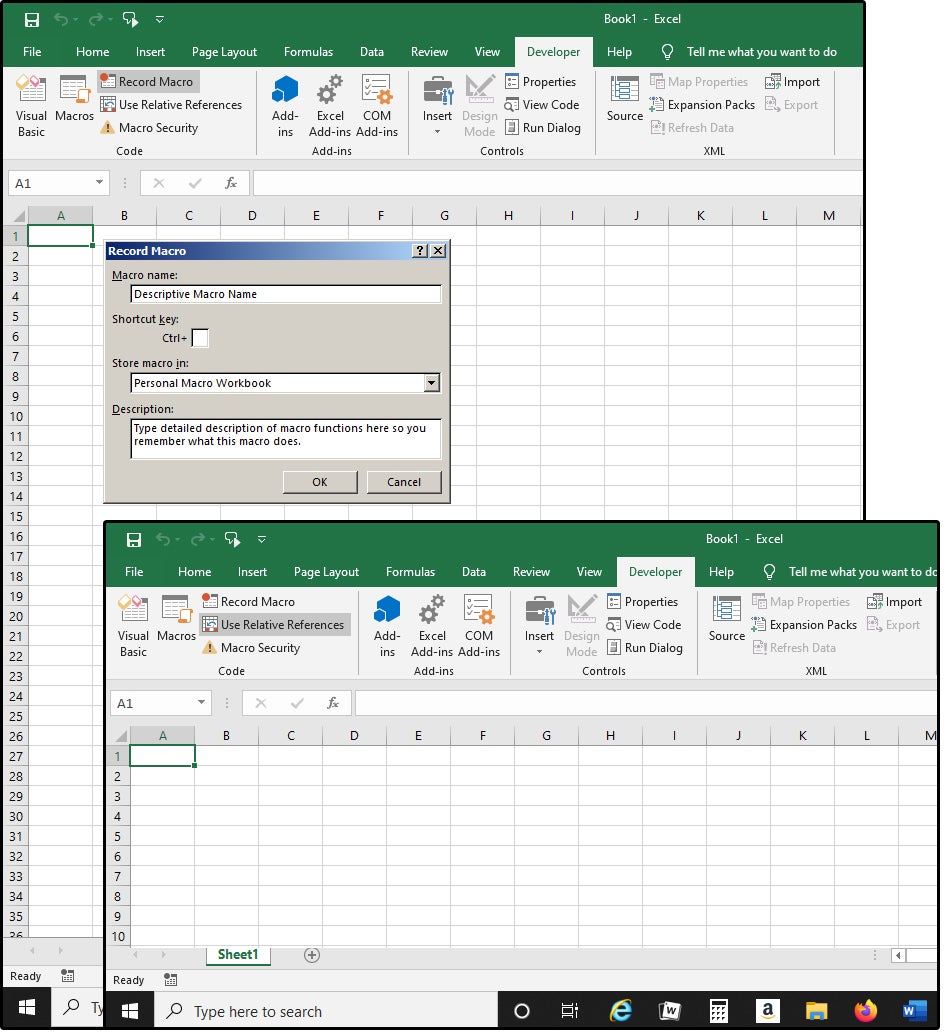Mastering Excel: How to Name Your Macros

Macros in Microsoft Excel automate repetitive tasks, streamline complex processes, and enhance productivity significantly. But as your collection of macros grows, managing them can become quite a challenge. Naming macros properly is not just about organization; it's about making your Excel experience seamless and efficient. This blog post will guide you through the essential steps and best practices for naming macros, ensuring you harness the full potential of this powerful feature in Excel.
Why Proper Naming Matters


A good macro name serves several key functions:
- Improves readability - Instantly tells other users or your future self what the macro does.
- Enhances maintainability - Easier to find and update macros when they’re clearly labeled.
- Boosts efficiency - Reduces search time in the macro list, allowing for quick activation.
- Prevents errors - Minimizes the risk of selecting the wrong macro by mistake.
Basic Guidelines for Naming Macros

Follow these basic guidelines to ensure your macro names are descriptive and functional:
- Be descriptive yet concise. Names like ‘SumColumn’ or ‘CopyToClipboard’ are preferable over vague names like ‘Macro1’ or ‘Copy’.
- Use CamelCase or underscore_separator for readability: ‘MergeData’ or ‘merge_data’.
- Prefix with a module identifier if applicable: ‘Sheet1_ClearData’, ‘Chart_AutoFormat’.
- Stick to alphanumeric characters. Excel doesn’t support symbols or spaces in macro names.
- Avoid using Excel’s reserved names like ‘Auto_Open’ or ‘Auto_Close’ unless intended for those specific purposes.
Steps to Name a Macro

Naming a macro in Excel isn’t a direct “one-size-fits-all” process due to VBA’s (Visual Basic for Applications) nuanced approach to naming conventions. Here are the steps to follow:
- Open the VBA Editor: Press ‘ALT + F11’ to open the VBA Editor.
- Insert a New Module: Right-click on any of the VBA project items, select ‘Insert’, then ‘Module’. This will create a new code container for your macro.
- Create Your Macro: Use ‘Sub YourMacroName’ to start defining your macro. Replace ‘[YourMacroName]’ with the desired name, following the guidelines above.
- Check for Name Uniqueness: Ensure the name isn’t already in use. VBA will prompt you if it’s not unique or if it conflicts with Excel’s reserved names.
💡 Note: Before naming a macro, check your list of existing macros to avoid naming conflicts.
Advanced Naming Strategies

For those with extensive macro libraries, consider these advanced strategies:
- Use a Naming Scheme: Develop a naming convention that categorizes macros by purpose, sheet, or project. For example, ‘DataValidation_Format’, ‘Invoice_ProcessPayment’, etc.
- Prefix with Version: If you update macros frequently, consider using versioning like ‘Calculate_V2’.
- Incorporate Dates: For macros that perform time-sensitive operations, incorporate dates into the name, e.g., ‘AnnualReview_2023’.
- Create a Master Macro List: Use a separate sheet or a dedicated workbook to catalog all your macros with descriptions, thus creating a reference guide.
📌 Note: A good naming scheme not only helps in organizing but also in finding macros when they become numerous.
Common Mistakes to Avoid

Naming macros might seem straightforward, but here are some pitfalls to steer clear of:
- Using Reserved Names: ‘Auto_Open’, ‘Auto_Close’ are special names in VBA for workbook events.
- Overly Long Names: While descriptiveness is good, too long names can be cumbersome and harder to remember.
- Inconsistency: Stick to your naming conventions to avoid confusion and reduce errors.
- Not Documenting: Always document your macros, especially when they serve niche purposes. Documentation helps others and your future self.
Naming Best Practices for Team Environments

When working in a team or sharing macros across departments, consistent naming practices are crucial:
- Establish and document a team-wide naming standard.
- Include user initials or a shorthand team identifier in the macro name to indicate authorship.
- Create a centralized repository of macros for easy access and version control.
To wrap up, proper macro naming is fundamental to leveraging Excel's full potential. By adhering to these guidelines, you not only streamline your own workflow but also ensure that anyone else using your macros can do so effortlessly. Effective naming practices enhance clarity, prevent confusion, and foster a more productive Excel environment. Remember, your macros are tools to make your work easier, not harder. Use these tips to craft names that are intuitive, efficient, and in line with Excel's VBA functionalities.
What if I have macros with similar names?

+
If your macros have similar names, consider using longer, more descriptive names or use prefixes and suffixes to differentiate them clearly.
Can I change a macro’s name after it’s created?

+
Yes, you can. Open the VBA Editor, locate the Sub procedure, and rename it. Be mindful of any references to the old name in your code or other macros.
Should I name macros using all caps?

+
It’s not necessary, but some developers use all caps for constants or global variables. Stick to what’s consistent and readable for your team or organization.